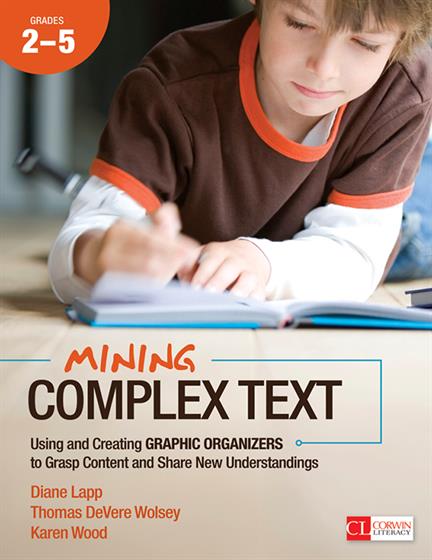Hands-on, Practical Guidance for Educators
From math,
literacy, science, equity, multilingual learners, and SEL, to assessment, school counseling,
and education leadership, our books are research-based and authored by experts
on topics most relevant to what educators are facing today.

Mining Complex Text, Grades 2-5
Mining Complex Text delivers fresh ways to use the best digital and print graphic organizers in whole-class, small-group, and independent learning across the content areas.
- Grade Level: 2-5
- ISBN: 9781483316291
- Published By: Corwin
- Series: Corwin Literacy
- Year: 2014
- Page Count: 184
- Publication date: October 07, 2014
Review Copies
Review copies may be requested by individuals planning to purchase 10 or more copies for a team or considering a book for adoption in a higher ed course. Request review copy
Other Titles in: English/Language Arts Common Core | Reading (Primary/Elementary) | Literacy (Primary/Elementary)




